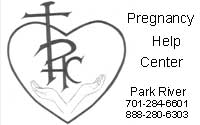Common methods
Suction Aspiration
At this early stage of development, suction abortions are done by dilating the cervix, then a powerful vacuum tube with a sharp cutting edge is inserted. The suction rips apart the body of the baby, and sucks out blood, amniotic fluid, tissue, and body parts. If any fetal or placental tissue is left behind in the uterus, infection can develop.
Dilation & Curettage (D&C)
This method is similar to the suction method with the added insertion of a hook shaped knife (curette) which cuts the baby into pieces. The pieces are scraped out through the cervix and discarded. Blood loss and likelihood of uterine perforation are relatively high in this form of abortion.
Dilation and Evacuation (D&E)
This method is used up to 18 weeks' gestation. Instead of the loop-shaped knife used in D&C abortions, a pair of forceps is inserted into the womb to grasp part of the fetus. The teeth of the forceps twist and tear the bones of the unborn child. This process is repeated until the fetus is totally dismembered and removed. Usually the spine must be snapped and the skull crushed in order to remove them. Bone fragments from the crushed skull can easily puncture the cervix, causing high blood loss.
Saline Abortion
Used after 16 weeks (four months) when enough fluid has accumulated. A long needle injects a strong salt solution through the mother's abdomen into the baby's sac. The baby swallows this fluid and is poisoned by it. It also acts as a corrosive, burning off the outer layer of skin. It normally takes somewhat over an hour for the baby to die from this. Within 24 hours, labor will usually set in and the mother will give birth to a dead or dying baby. (There have been many cases of these babies being born alive. They are usually left unattended to die. However, a few have survived and later been adopted.) This concentrated salt may cause severe hemorrhage, cervical injuries, or side effects to the nervous system such as seizures or coma.
Prostaglandin Abortion
This form of abortion uses chemicals developed by the Upjohn Pharmaceutical Co. which cause the uterus to contract intensely, pushing out the developing baby. The contractions are more violent than normal, natural contractions, so the unborn baby is frequently killed by them -- some have even been decapitated. Many, however, have also been born alive. Permanent placental, cervical, and cardiovascular side-effects are common. Even death is possible.
Hysterectomy
Used mainly in the last three months of pregnancy, the womb is entered by surgery through the wall of the abdomen. The technique is similar to a Caesarean delivery, except that the umbilical cord is usually cut while the baby is still in the womb, thus cutting off his oxygen supply and causing him to suffocate. Sometimes the baby is removed alive and simply left in a corner to die of neglect or exposure. The risk to the mother's health is greatest in this form of abortion, and the chance of complications during later pregnancies is greatly increased.
Partial Birth Abortion (D&X)
Performed during the late second or third trimester. Using ultrasound, the abortionist grasps the baby's leg with forceps, and partially forcefully delivers all but the head. Scissors are then jammed into the back of the babies skull, and the wound is pried open. A powerful vacuum tube is inserted and sucks out the baby's brain. The dead baby's head is then delivered.
For more information pertaining to medical issues related to partial birth abortion, please visit: http://www.nrlc.org/abortion/pba/keymedical.html












